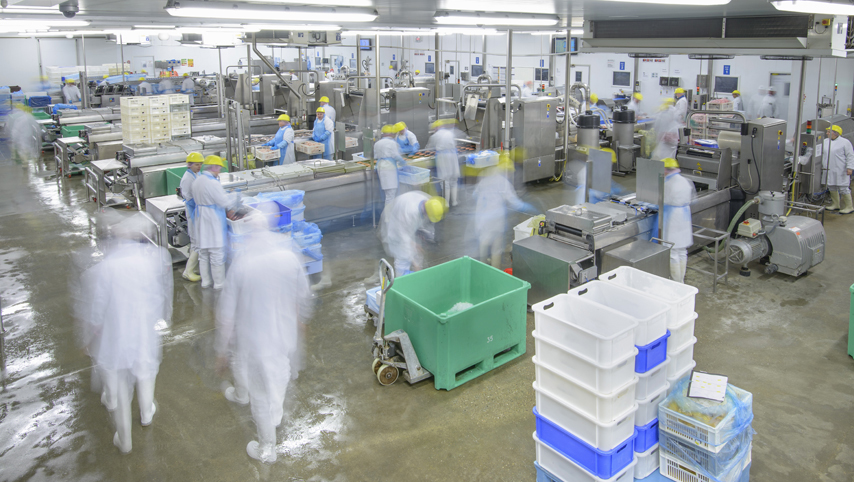When the COVID-19 pandemic first hit, few of us would have predicted how long…and how deep…this crisis would go. Without a clear end in sight, companies have to take stock of every aspect of their organization and assess whether or not they are ready for the challenges that may ensue.
A crisis like COVID results in changes in consumer behavior and that can result in unexpected issues that suppliers (and their buyers) suddenly were facing. The obvious example of this is the shift in the food supply industry as closures of restaurants, as well as food service organizations in schools, businesses, began to rise.
Food is food…right? Wrong!
We sometimes take for granted that a product is able to be used in a variety of circumstances with little adjustment. That is not always the fact, especially when dealing with food products that face issues like perishability.
An article in McKinsey & Company illustrates exactly how all the companies that “touch” food-service products were impacted when the crisis first hit. “Companies that produce, convert, and deliver food to consumers and businesses face a web of interrelated risks and uncertainties across all steps in the value chain—from farmers to end-customer channels. Food-service suppliers, for example, faced abrupt order cancellations across their entire customer bases. That left many of them with excess stock that they couldn’t easily redirect to consumers because of packaging-size mismatches. Few home chefs have the cupboard space to accommodate restaurant-size cans of fruit and vegetables, but creating consumer-friendly formats would require additional investment of capital and time. And that would put perishable materials at risk, threatening narrow margins among prices, logistics, and transaction costs.”
How this impact flows upstream
To see how food-service distributors are affected, it’s necessary to track how each piece of the supply chain is affected. The McKinsey article, addresses this in great detail, but it essentially boils down to the following:
Farmers/Meat Processors – Both of these entities have been affected by the pandemic in a couple of ways. First, there is the impact of infection itself. We are all aware of the number of meat-packing plants that were shut down because of infection. Although farms were not necessarily shut down, their workforce, especially in produce, succumbed to the virus as well…and since farms are normally in more rural areas, finding replacements proved difficult. Plus, as restaurants shut down and demand was reduced, farmers found themselves with surplus of perishables, both produce and dairy, leading some to spill excess milk and plow over crops.
Packaged Goods Companies – As you know, food companies produce goods for two different customer types; individual consumers (with limited space in their homes to store product) and food-service companies (individual restaurants, restaurant chains, bulk stores like Costco, cafeterias, etc.). As restaurants closed, packaged goods companies were left with product that was packaged in a way that made it unusable for most consumers. Scaling down, changing packaging, going to a third party…these are all options, but they are options that can prove costly. Plus, as restaurants start to open again, slowly increasing capacity and thus a need for more inventory, packaged goods companies have to be ready to supply those businesses. The uncertainty of when this will end makes it difficult for companies to plan for how product will be packaged and for whom.
Food Service Distributors – Distributors are able to maintain productivity by knowing what is coming in and going out in terms of volume. When COVID-19 hit and restaurants started closing down, distributors found themselves with large amounts of inventory in their warehouses with now place to send it. Take-out ordering and the use of Door Dash, Grub Hub and other delivery services helped a bit but nowhere near the amount necessary to supplant lost business. When distributors cancelled orders and managed to slowly clear inventory, they are now often left with overcapacity. This uncertainly also affects the trucking needs of these companies. What do they do with underutilized assets? Do they furlough or lay off drivers? As with the other entities above, distributors could make changes, like consolidating warehouses and reducing staff. But again, what happens when business starts to ramp up again. They may not be able to turn around and return to “normal” so easily.
When will we return to normal? And what then?
According to McKinsey, the anticipated return for the food-service industry to pre-COVID levels is Q1 of 2021 if the virus is contained or Q1 2024 if it is not. That is an alarming assessment and, if it occurs will necessitate real soul-searching for ways to hold on until the crisis goes away. Companies will need to be increasingly agile to deal with the challenges; profit margins will undoubtedly be affected; and having the ability to quickly add headcount when things turn around will be vital. McKinsey believes that food channel mismatches will be an ongoing concern, removing food capacity from the market. As less food is available, inflation will occur, which we are already starting to see on the grocery shelves. What is abundantly clear is that food-service contributors will be dealing with these challenges for some time…even as the crisis dissipates.
Read my blog on the importance of supply chain relationships during a crisis.





